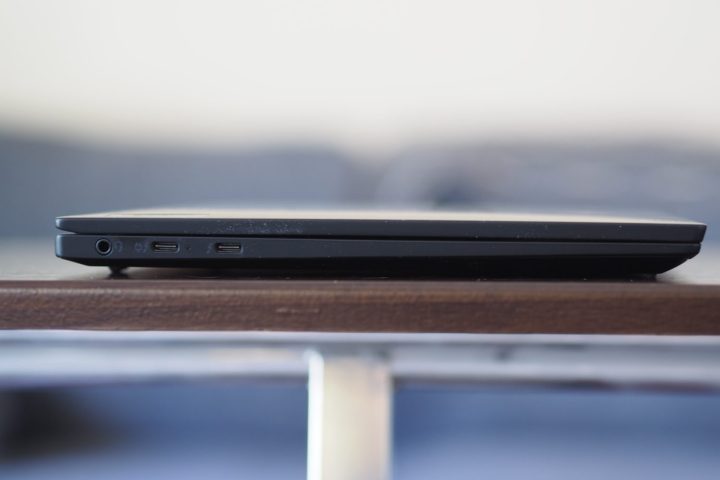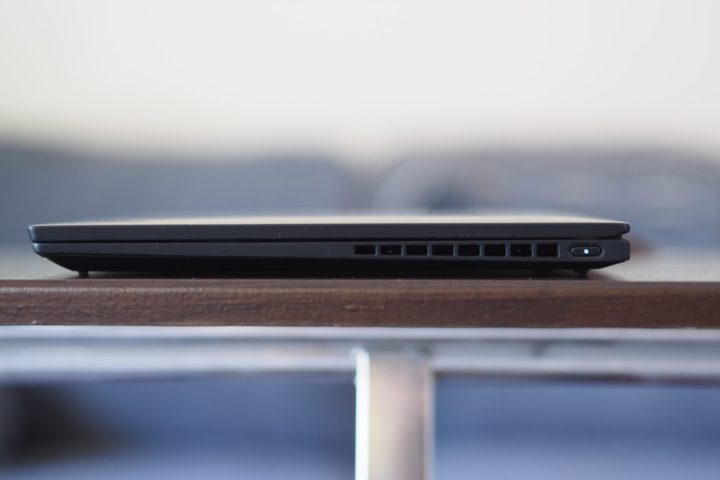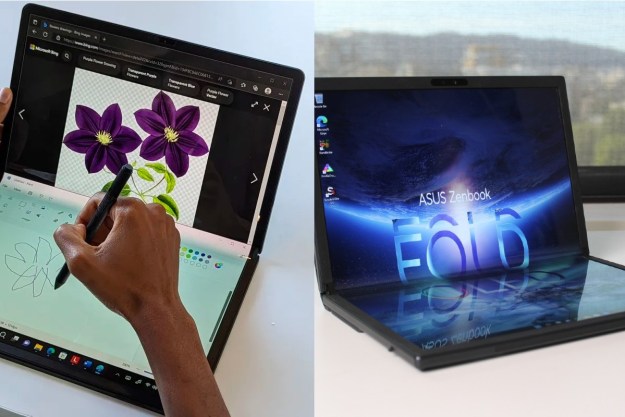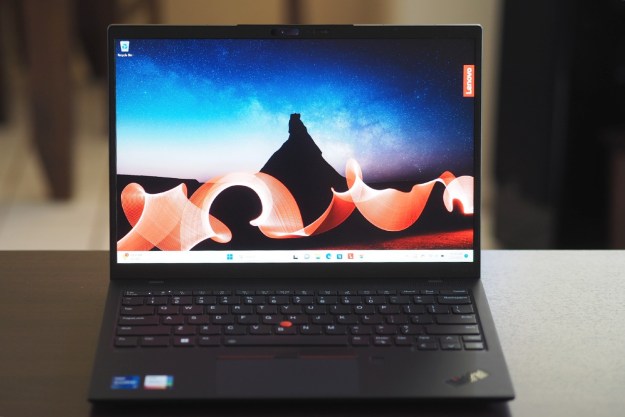
- Solid productivity performance
- Excellent build quality
- Very light
- Good productivity display
- Great keyboard
- Mixed battery life
- Touchpad is too small
- Design is feeling dated
Lenovo’s iconic ThinkPad design remains as recognizable as ever. Recognizable comes with a downside though, because the design is starting to feel a little dated, as both the industry and Lenovo itself start to leave the design behind. Along those lines, the latest ThinkPad X1 Nano, now on its third generation, retains the previous generation’s design while updating the internals.
The laptop is very small and incredibly light, but it doesn’t seem as modern as the ThinkPad Z13. It’s a great little laptop for old-school ThinkPad fans, but it’s facing stiff competition in the 13-inch laptop class.
Specs and configurations
| Lenovo ThinkPad X1 Nano Gen 3 | |
| Dimensions | 11.5 inches x 8.19 inches x 0.58 inches |
| Weight | 2.19 pounds |
| Processor | Intel Core i5-1340P Intel Core i5-1350P vPro Intel Core i7-1360 Intel Core i7-1370P vPro |
| Graphics | Intel Iris Xe |
| RAM | 16GB |
| Display | 13.0-inch 16:10 2K (2,160 x 1,350) IPS 13.0-inch 16:10 2K IPS touch |
| Storage | 256GB SSD 512GB SSD 1TB SSD |
| Touch | Optional |
| Ports | 2 x USB-C with Thunderbolt 4 1 x 3.5mm audio jack 1 x optional Nano-SIM slot |
| Wireless | Wi-Fi 6E and Bluetooth 5.1 Optional 4G WWAN |
| Webcam | 1080p with infrared camera for Windows 11 Hello |
| Operating system | Windows 11 |
| Battery | 49.6 watt-hour |
| Price | $1,217+ |
As usual, you need to do some digging to figure out Lenovo’s pricing and configuration schemes, and they change often. Right now, the ThinkPad Nano Gen 3 starts at $1,217 for a Core i5-1340P CPU, 16GB of
Small and light, and appealing to a particular crowd

As mentioned in the introduction, Lenovo has started to update its designs to be more modern in look and feel than the design that the ThinkPad brand has maintained for years. The ThinkPad Z13 is a classic example, abandoning almost all of the traditional ThinkPad aesthetics with the benefit of being far more modern.
The ThinkPad X1 Nano Gen 3, though, is an old-school ThinkPad through and through. It’s all-black with a few red accents, such as the LED dotting the “i” in the ThinkPad logo on the lid and the red TrackPoint nubbin in the middle of the keyboard. It’s not a bad look, it’s just dated. The large plastic top and bottom display bezels don’t help, leaving the Dell XPS 13 Plus as a much more contemporary laptop.
What also hasn’t changed is the build quality — and that’s a good thing. The ThinkPad X1 Nano Gen 3 is constructed of the same hybrid of materials, with a carbon fiber lid and magnesium-aluminum alloy in the chassis bottom. While the lid resists bending, the keyboard deck is a touch flexible. It’s not a problem at all, and is mainly down to the lightweight magnesium that’s used. Lenovo subjected the laptop to a suite of military certifications for robustness, so you can rest assured it’s a durable machine.
The ThinkPad X1 Nano Gen 3 is one of the lightest

The laptop retains the same ThinkPad keyboard, with its sculpted keycaps and copious key spacing. The switches have deep travel and a firm action, requiring a little more pressure than I prefer. The MacBook and XPS 13 Plus keyboards are both lighter and snappier, and I find them more comfortable for longer typing sessions. The touchpad area is small, with space taken away by the dual buttons supporting the TrackPoint. It has a comfortable surface and confident, quiet button clicks, but I found it a bit cramped.
Connectivity is typical for today’s tiny
Finally, the webcam is a 1080p version providing a quality image, with a physical shutter for privacy. There’s an infrared camera supporting Windows 11 Hello facial recognition, and a fingerprint reader on the palm rest provides another way to log in without a password. Additional security and privacy is provided by the Lenovo Computer Vision user-presence sensing, which can turn off the display and lock the laptop when the user steps away and then wake it up and log back in when the user returns. The feature worked well, and I had to turn it off to complete my battery tests.
Solid performance for such a tiny laptop
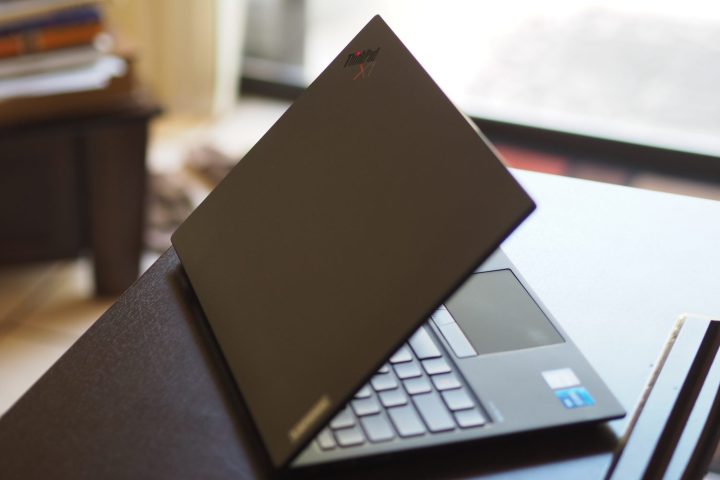
The ThinkPad X1 Nano Gen 3 can be configured with a variety of 13th-gen Intel CPUs. My review unit was equipped with the 28-watt Core i7-1360P, a 12-core (four Performance and eight Efficient), 16-thread CPU that typically provides solid productivity performance.
The ThinkPad performed similarly to other
Overall, the ThinkPad X1 Nano Gen 3 provides solid productivity performance, but won’t set any speed records in creative tasks. But of course, that’s not why people buy tiny
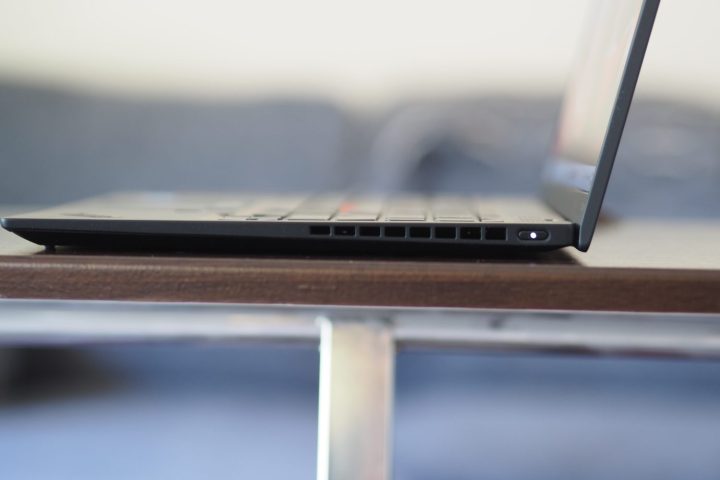
Note that you can opt for processors with Intel’s vPro technology. This makes the ThinkPad X1 Nano Gen 3 a good option for larger companies that can make use of the extra management and security features vPro enables.
| Geekbench (single/multi) |
Handbrake (seconds) |
Cinebench R23 (single/multi) |
PCMark 10 Complete |
|
| Lenovo ThinkPad X1 Nano (Core i7-1360P) |
Bal: 1813 / 8755 Perf: 1795 / 8877 |
Bal: 138 Perf: 109 |
Bal: 1572 / 6467 Perf: 1619 / 7301 |
5312 |
| Dell XPS 13 Plus (Core i7-1360P) | Bal: 1652 / 7640 Perf: 1726 / 9098 |
Bal: 123 Perf: 100 |
Bal: 1512 / 7417 Perf: 1705 / 9895 |
5305 |
| Lenovo Yoga 9i Gen 8 (Core i7-1360P) |
Bal: 1650 / 8080 Perf: 1621 / 8544 |
Bal: 122 Perf: 101 |
Bal: 1846 / 8779 Perf: 1906 / 9849 |
5537 |
| Asus Zenbook S 13 OLED 2023 (Core i7-1355U) |
Bal: 1,829 / 6,893 Perf: 1,836 / 6,908 |
Bal: 157 Perf: 135 |
Bal: 1,629 / 6,005 Perf: 1,827 / 6,962 |
5,423 |
| MSI Prestige 14 (Core i7-1260P) |
Bal: 1843 / 8814 Perf: 1835 / 10008 |
Bal: 114 Perf: 97 |
Bal: 1553 / 8734 Perf: 1567 / 10450 |
6201 |
| Acer Swift 3 (Core i7-1260P) | Bal: 1708 / 10442 Perf: 1694 / 10382 |
Bal: 100 Perf: 98 |
Bal: 1735/ 9756 Perf: 1779 / 10165 |
5378 |
| Apple MacBook Air M2 (M2) |
Bal: 1,925 / 8,973 Perf: N/A |
Bal: 151 Perf: N/A |
Bal: 1,600 / 7,938 Perf: N/A |
N/A |
Mixed battery life

The smaller the laptop, the less the battery life. That’s not always true, as the incredibly long-lasting Apple MacBook Air M2 demonstrates. The Asus ZenBook S 13 OLED also did well with its low-power Intel CPU. But with just a 49.6 watt-hour battery, the ThinkPad X1 Nano Gen 3 was a mixed performer in terms of longevity.
While the ThinkPad did poorly in our web-browsing test, it was slightly above average in our PCMark 10 Applications test and average in our video-looping test. The PCMark 10 test runs through a series of live applications with pauses to simulate real-world use, and while most
I’m not sure how to account for the poor web-browsing results given the other two scores. It’s possible that the ThinkPad X1 Nano Gen 3 gets at least average battery life, but I’m left with questions.
| Web browsing | Video | PCMark 10 Applications | |
| Lenovo ThinkPad X1 Nano Gen 3 (Core i7-1360P) |
6 hours, 10 minutes | 10 hours, 38 minutes | 11 hours, 13 minutes |
| Dell XPS 13 Plus (Core i7-1360P) |
5 hours, 13 minutes | 6 hours, 43 minutes | N/A |
| Asus Zenbook S 13 OLED 2023 (Core i7-1355U) |
9 hours, 47 minutes | 15 hours, 14 minutes | 12 hours, 50 minutes |
| Lenovo Yoga 9i Gen 8 (Core i7-1360P) |
7 hours, 41 minutes | 13 hours, 25 minutes | 9 hours, 40 minutes |
| Apple MacBook Air M2 (Apple M2) |
17 hours, 59 minutes | 21 hours, 9 minutes | N/A |
A bright display with average colors
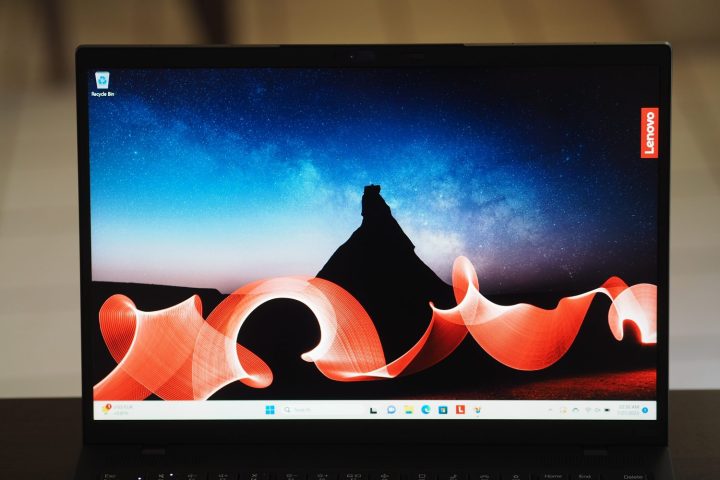
As I’ve written about before, even “average” IPS displays have gotten so much better over the last couple of years. It’s rare to find a panel that doesn’t provide at least excellent quality for productivity performance, although getting a display that’s suitable for demanding creators still requires a bit more care.
The ThinkPad X1 Nano Gen 3’s IPS display, running at a 2K resolution and with a choice of touch or non-touch support, is a case in point. It offers very good brightness at 480 nits, well above our 300-nit standard. And its contrast of 1,570:1 is excellent for an IPS display, where we like to see at least 1,000:1. Its colors were right at the IPS average, with 100% sRGB and 76% AdobeRGB coverage and good accuracy with a DeltaE of 1.5 (less than 2.0 is preferred for productivity work).
These are solid results and make the ThinkPad X1 Nano Gen 3 a suitable choice for its productivity user target. The colors aren’t good enough for serious creative work, but they won’t get in the way of typical office tasks and streaming media.
As you might imagine, audio from the two upward-firing speakers above the keyboard is fine for a small laptop, but nothing to write home about. Mids and highs are clear, but there’s no bass, and the laptop gets loud enough without distorting. It’s fine for YouTube videos and system sounds, but a good pair of
It’s not perfect, but it’s still a ThinkPad
Although its design hasn’t changed and seems a bit dated to me, and its battery life is poor, there’s a lot to like about the ThinkPad X1 Nano Gen 3. It performs well and will keep up with demanding productivity workers, and it’s incredibly light and comfortable to carry around. Its display was pleasant to use as long as I wasn’t too worried about really wide colors, which as a writer I’m not.
I’ll give it a recommendation, primarily based on its light weight. And certainly, traditional ThinkPad lovers will gravitate toward the laptop. Just note that there are several other good options to consider, including the Dell XPS 13 Plus that feels a lot more modern.
Editors' Recommendations
- Lenovo ThinkPad deals: Save over $1,000 on the classic laptop
- The best upgradeable laptops
- This tiny ThinkPad can’t quite keep up with the MacBook Air M2
- The ThinkPad X1 Carbon Gen 11 is both faster and longer-lasting
- Why the latest ThinkPad X1 Yoga Gen 8 isn’t worth the upgrade

